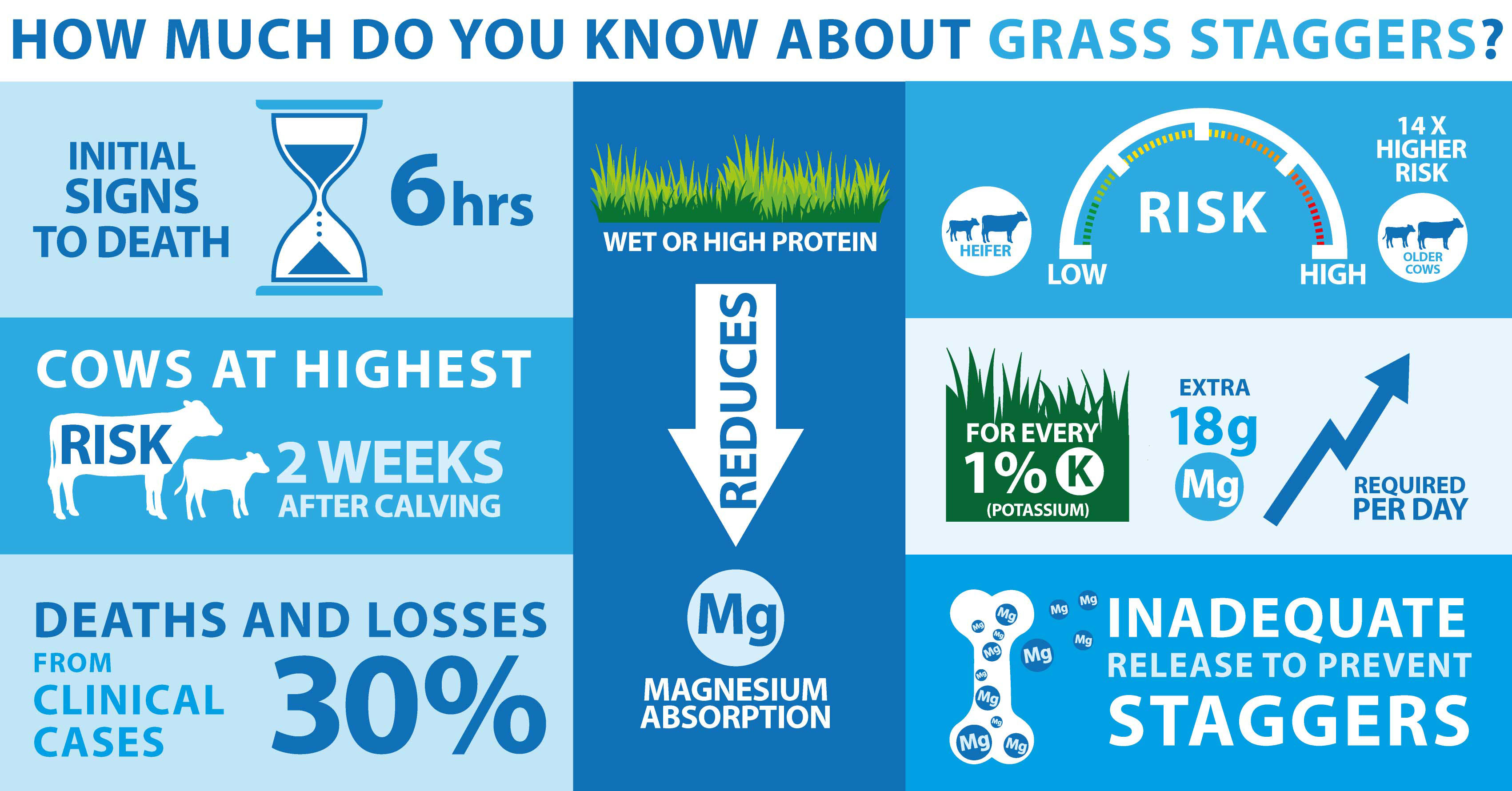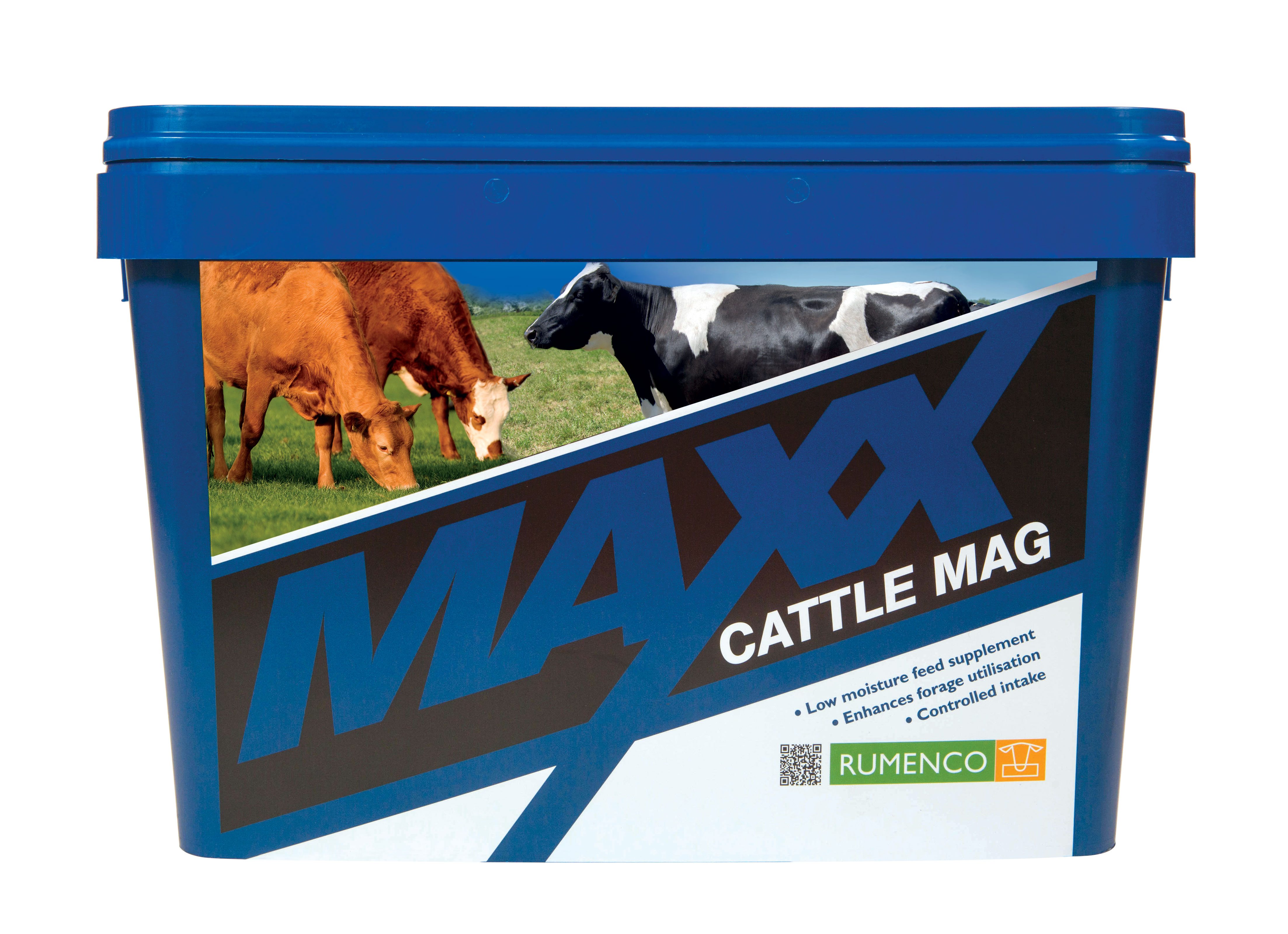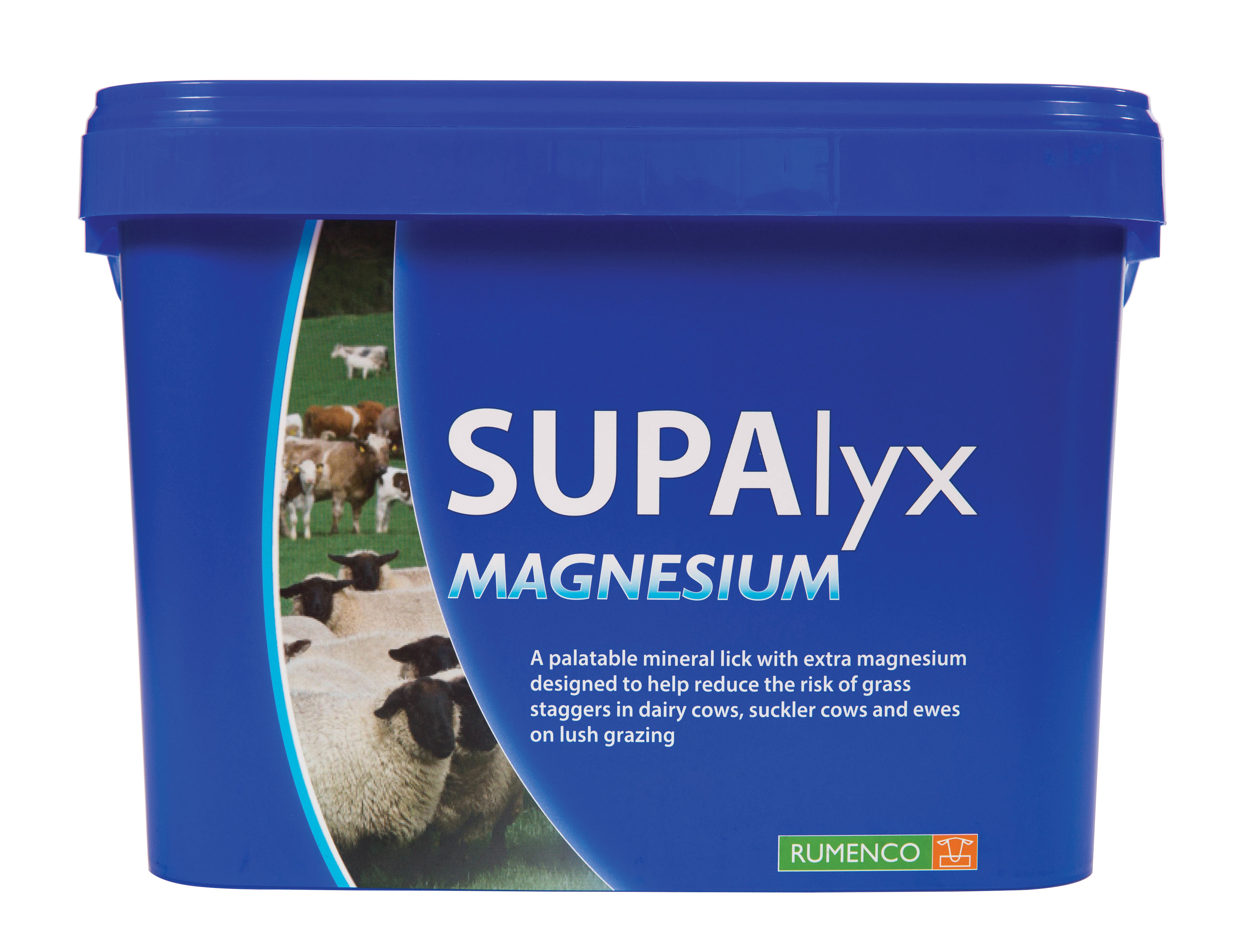Spring grass flush: Managing the risk
Estimations suggest that 1% of cattle in the UK will experience clinical grass staggers, with up to 30% of all clinical cases resulting in death and significant direct losses. A far larger percentage of animals, including ewes, will experience sub-clinical cases that may affect overall animal performance.

Grass staggers, otherwise known as grass tetany or hypomagnesaemia, is a very real threat for suckler and dairy cows at turnout as well as ewes post-lambing. However, it is easily managed by assessing and managing the on-farm risks. The earlier potential turnout as a result of the milder winter and forage stocks shortage means farmers should consider their options early this year.
Grass staggers is defined as a deficiency of available dietary magnesium. Magnesium is a key macro-nutrient in the diet and is essential for bone growth and maintenance, nervous system function and also as an aid to fibre digestion in the rumen.
Rapidly growing spring grass typically has a low magnesium content (0.1 to 0.2% in dry matter) which, combined with its low dry matter and rapid transit through the rumen, can result in very low levels of magnesium absorption into the animal’s bloodstream. Magnesium is predominantly stored in the bones of the animal and consequently is not readily available when dietary supply is compromised. Stock therefore rely on daily magnesium supplementation to maintain adequate blood magnesium levels at times where risk is increased such as spring, and autumn.

In addition to the low magnesium content of spring grass, a number of other dietary factors can compromise magnesium absorption in ruminants, further elevating the problem of grass staggers:
- Increased potassium levels of spring grass. Potentially due to fertiliser application, high potassium can upset the sodium to potassium ratio and decrease magnesium absorption in the animal. Offering sodium (salt) alongside magnesium can help redress this ratio.
- Dietary changes. Potential imbalances between protein and carbohydrate, like that seen in spring grass, can affect magnesium absorption.
- Metabolic stresses caused by an imbalance of minerals and trace elements can lead to a “lock up” of magnesium; again, impacting the animals’ ability to draw on the limited supply available.
- Disruptions to feed intake and therefore magnesium uptake and absorption, such as inclement weather, change of grazing pasture, transportation, stress of calving or weaning can all increase the risk of grass staggers.
There are a number of simple steps that can be taken to help alleviate the risk of grass staggers:
- Provide long fibre, in the form of hay or silage, to help slow the transition of wet spring grass through the rumen.
- Maintain dietary energy levels (notably starch and sugar) to help prevent excess rumen ammonia,
- Avoid disruption to grazing
- Minimise use of nitrogen/ potassium fertilisers
- Offer supplementary sodium (salt) source to readdress the sodium to potassium ratio.
- Ensure daily access to a palatable magnesium supplement.
Magnesium is typically an unpalatable mineral, so by presenting it in a molassed free access lick, farmers can be assured that their stock have a reliable supplement to complement their diet.
MAXX Cattle Mag is a dehydrated molasses bucket offering controlled intakes and a high level of digestible sugar energy, with added copper. Ideal for supplying extra energy at a crucial time for cattle, MAXX Cattle Mag also contains 10.5% magnesium and a range of minerals, vitamins and trace elements including sodium.

Alternatively, SUPAlyx Magnesium is a molassed mineral lick containing 15% magnesium along with a range of minerals, vitamins and trace elements, including sodium. It is suitable for feeding to breeding and lactating cows and sheep post-lambing at risk of grass staggers to help supplement grazing at this time of year.

Ideally, magnesium supplements should be offered up to two weeks pre-turnout to better prepare stock for changes. Then, by turnout, they are familiar with the supplements and are not faced with a deficit.
Grass staggers is a common, well known challenge at turnout that can be fatal, however, it’s easily avoided by predicting where the main risks are and addressing them with suitable magnesium supplements.